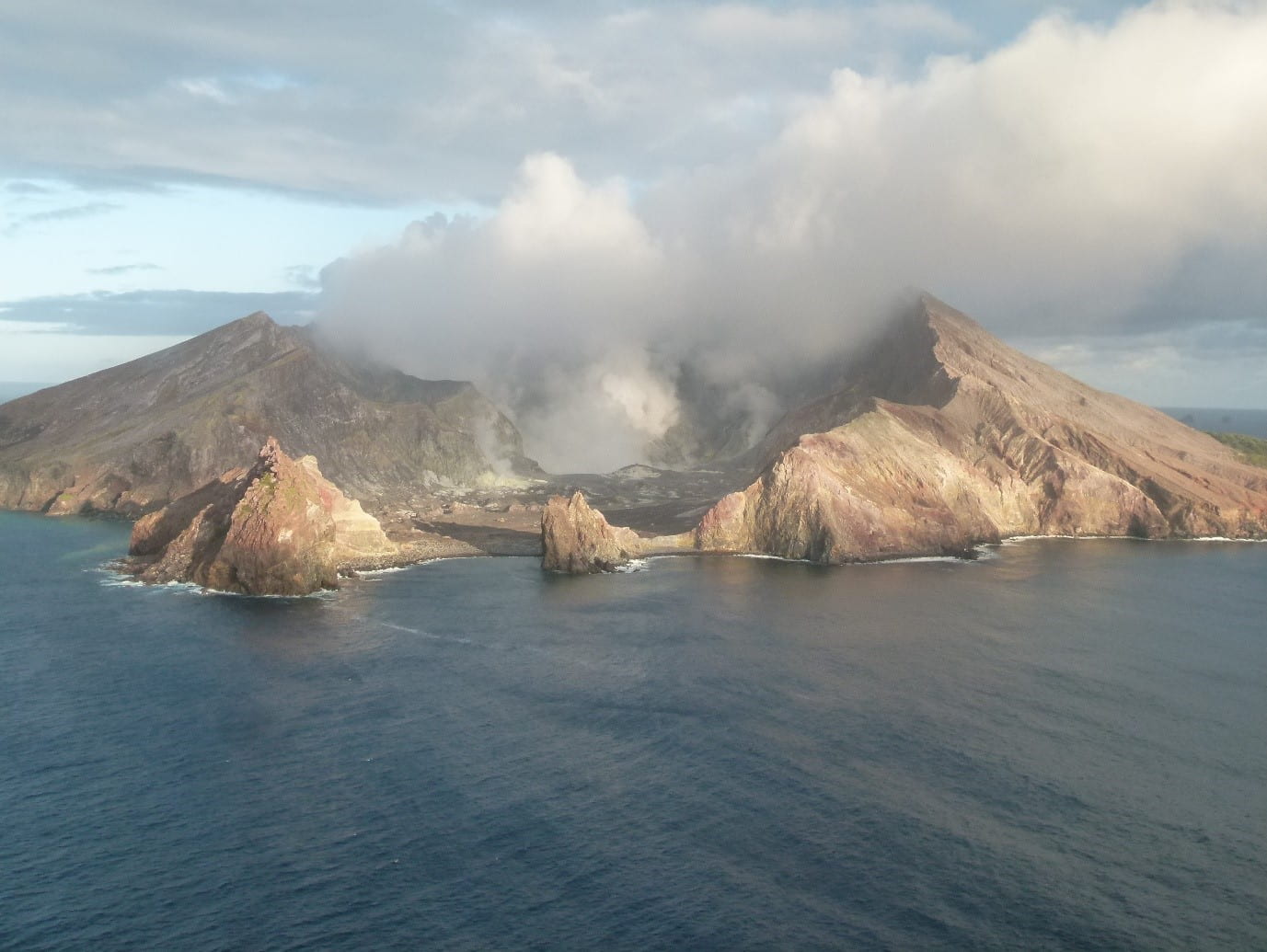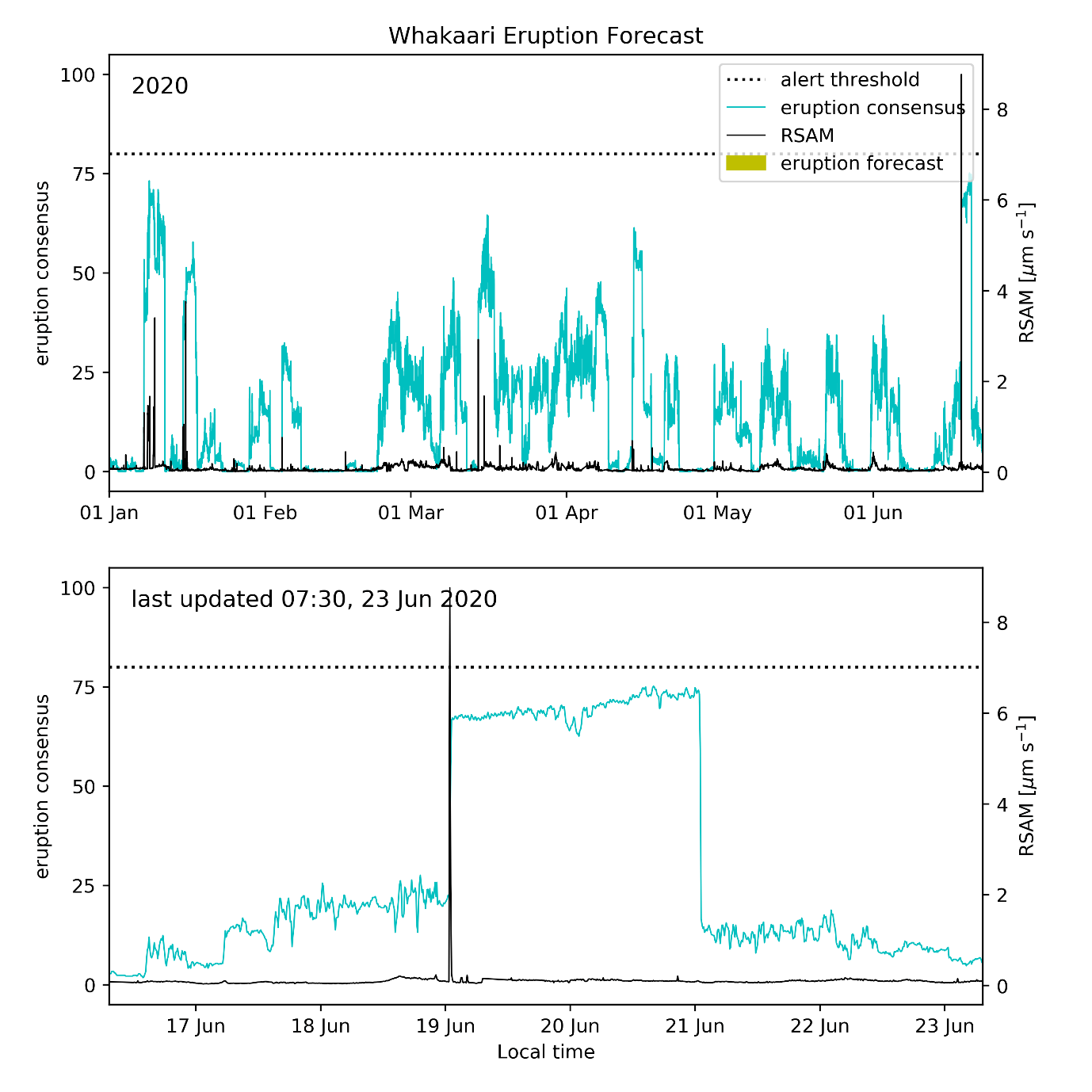
Develop short-term eruption warning systems for Whakaari and other volcanoes
Dr David Dempsey, Senior Lecturer, Engineerig Science

On 9th December 2019, at 2pm, Whakaari volcano erupted unexpectedly, killing 21 tourists and guides on the island. The high cost underlines the hazards in our backyard and the difficulties facing those estimating volcanic risk. Since this tragedy, we have been working to develop short-term eruption warning systems for Whakaari and other volcanoes. Whakaari/White Island is an andesite stratovolcano in the offshore Bay of Plenty, part of a chain of volcanoes extending across the North Island to Mt Ruapehu. In spite its regular eruptions – five in the last decade – it has also been a popular tourist destination, with regular boat and helicopter tours from Whakatane. GNS Science monitor volcanic activity at the island using seismometers that continuously stream data to the mainland. We took nine years of seismic data from Whakaari and extracted the component that is particularly sensitive to the volcano state, called tremor. We then searched for patterns in the tremor that were especially unusual in the days before eruptions. We found strong 4-hour bursts of seismic energy in the hours before many of these eruptions, which we interpret as hot magmatic fluids entering the shallow groundwater. Once mixed, they cause heating and pressurisation that eventually leads to an explosive eruption.
The Real-time alert system
It would not have been possible without assistance from the Centre for eResearch (CeR). The key requirement was a continuous computing resource that could operate for months on end without interruption. CeR helped us set up a virtual machine on the Nectar Cloud to run our forecaster, and then configured a web portal so that key scientists could access the current state anywhere in the world, at any time. This work was a collaboration between the Faculty of Engineering (Dr David Dempsey and Dr Andreas Kempa-Liehr) and the School of Environment (Prof. Shane Cronin). The next step is to see if it could work at other volcanoes in New Zealand and around the world.
Recognising suspicious seismic activity through modelling
We taught a model to recognise these patterns and to raise alerts when it sees suspicious seismic activity that could indicate a future eruption. This model – trained using four eruptions and tested with a fifth – could anticipate most eruptions, and would have given 16 hours warning of the fatal 2019 eruption. We have been operating the forecasting system in a 24/7 real-time manner since February 2020. Every 10 minutes, it receives new data from the GNS seismometer and uses this to update its guess about whether an eruption is imminent. If it thinks an eruption is likely, an email alert is automatically sent to key scientists.

The real-time forecasting model (blue) responding to the M 7.2 Kermadec earthquake in June, as seen through the web portal.
See more case study projects

Our Voices: using innovative techniques to collect, analyse and amplify the lived experiences of young people in Aotearoa

Painting the brain: multiplexed tissue labelling of human brain tissue to facilitate discoveries in neuroanatomy

Detecting anomalous matches in professional sports: a novel approach using advanced anomaly detection techniques

Benefits of linking routine medical records to the GUiNZ longitudinal birth cohort: Childhood injury predictors

Using a virtual machine-based machine learning algorithm to obtain comprehensive behavioural information in an in vivo Alzheimer’s disease model

Mapping livability: the “15-minute city” concept for car-dependent districts in Auckland, New Zealand

Travelling Heads – Measuring Reproducibility and Repeatability of Magnetic Resonance Imaging in Dementia

Novel Subject-Specific Method of Visualising Group Differences from Multiple DTI Metrics without Averaging

Re-assess urban spaces under COVID-19 impact: sensing Auckland social ‘hotspots’ with mobile location data

Aotearoa New Zealand’s changing coastline – Resilience to Nature’s Challenges (National Science Challenge)

Proteins under a computational microscope: designing in-silico strategies to understand and develop molecular functionalities in Life Sciences and Engineering

Coastal image classification and nalysis based on convolutional neural betworks and pattern recognition

Determinants of translation efficiency in the evolutionarily-divergent protist Trichomonas vaginalis

Measuring impact of entrepreneurship activities on students’ mindset, capabilities and entrepreneurial intentions

Using Zebra Finch data and deep learning classification to identify individual bird calls from audio recordings

Automated measurement of intracranial cerebrospinal fluid volume and outcome after endovascular thrombectomy for ischemic stroke

Using simple models to explore complex dynamics: A case study of macomona liliana (wedge-shell) and nutrient variations

Fully coupled thermo-hydro-mechanical modelling of permeability enhancement by the finite element method

Modelling dual reflux pressure swing adsorption (DR-PSA) units for gas separation in natural gas processing

Molecular phylogenetics uses genetic data to reconstruct the evolutionary history of individuals, populations or species

Wandering around the molecular landscape: embracing virtual reality as a research showcasing outreach and teaching tool
























































































































































